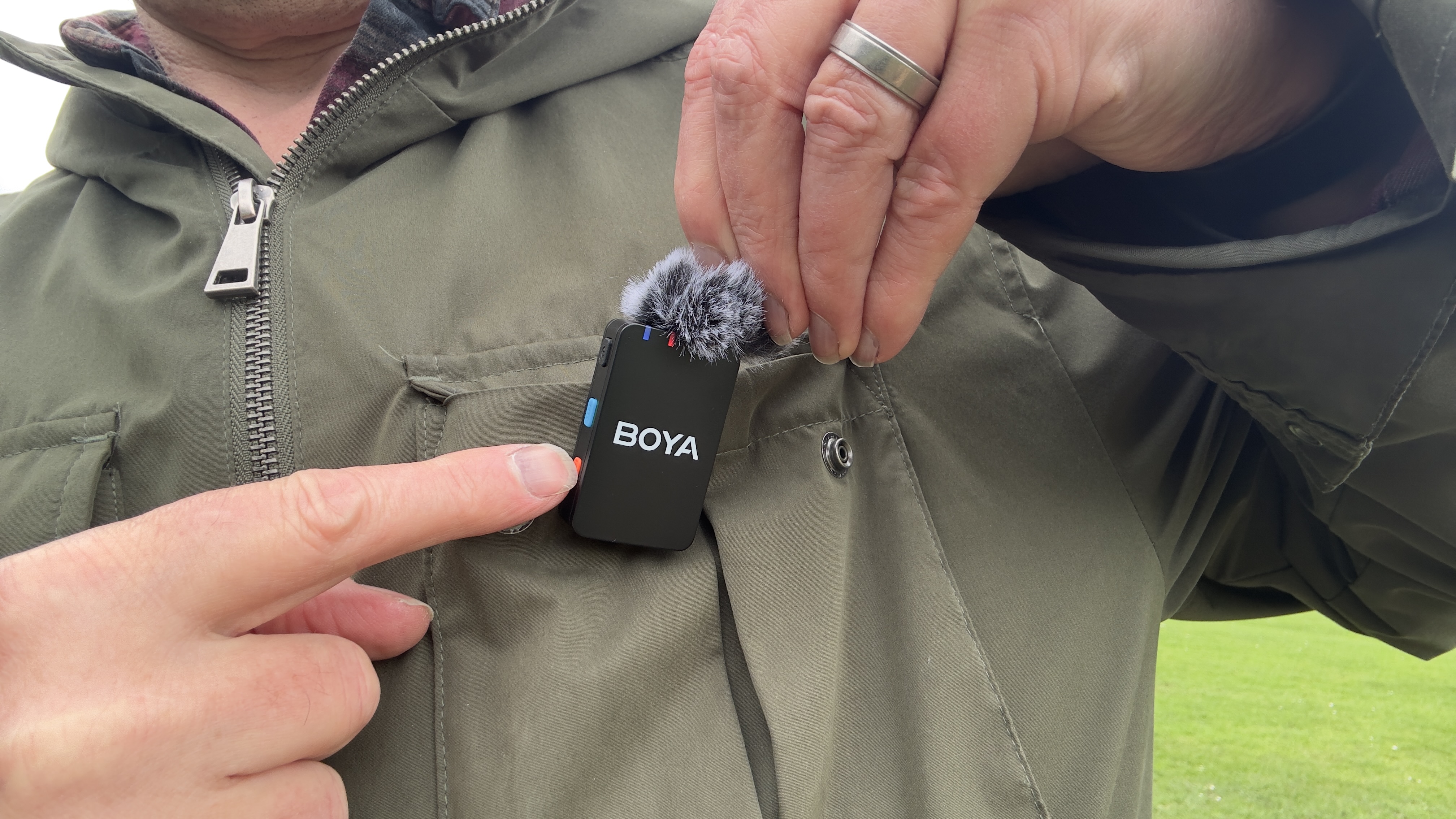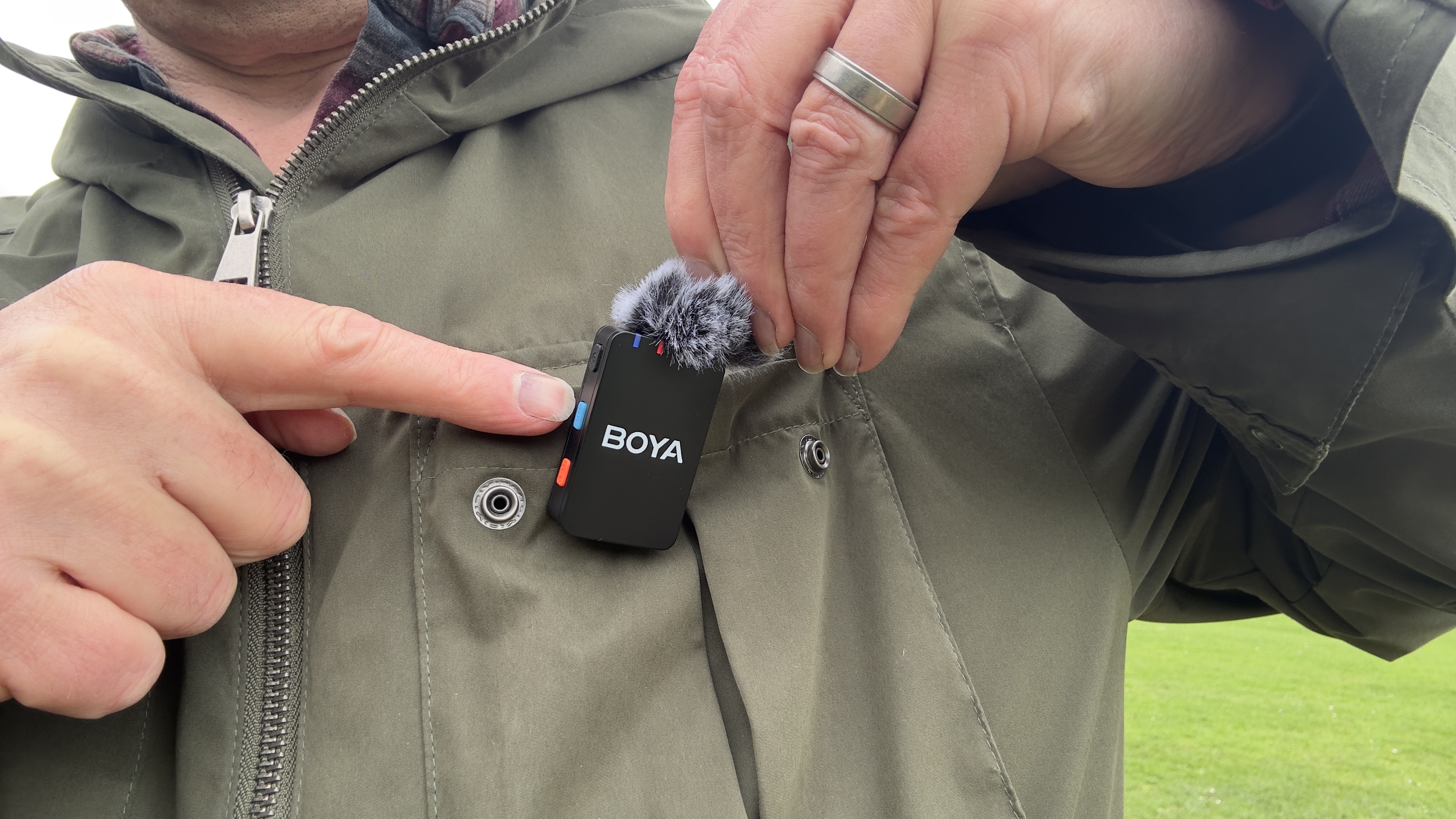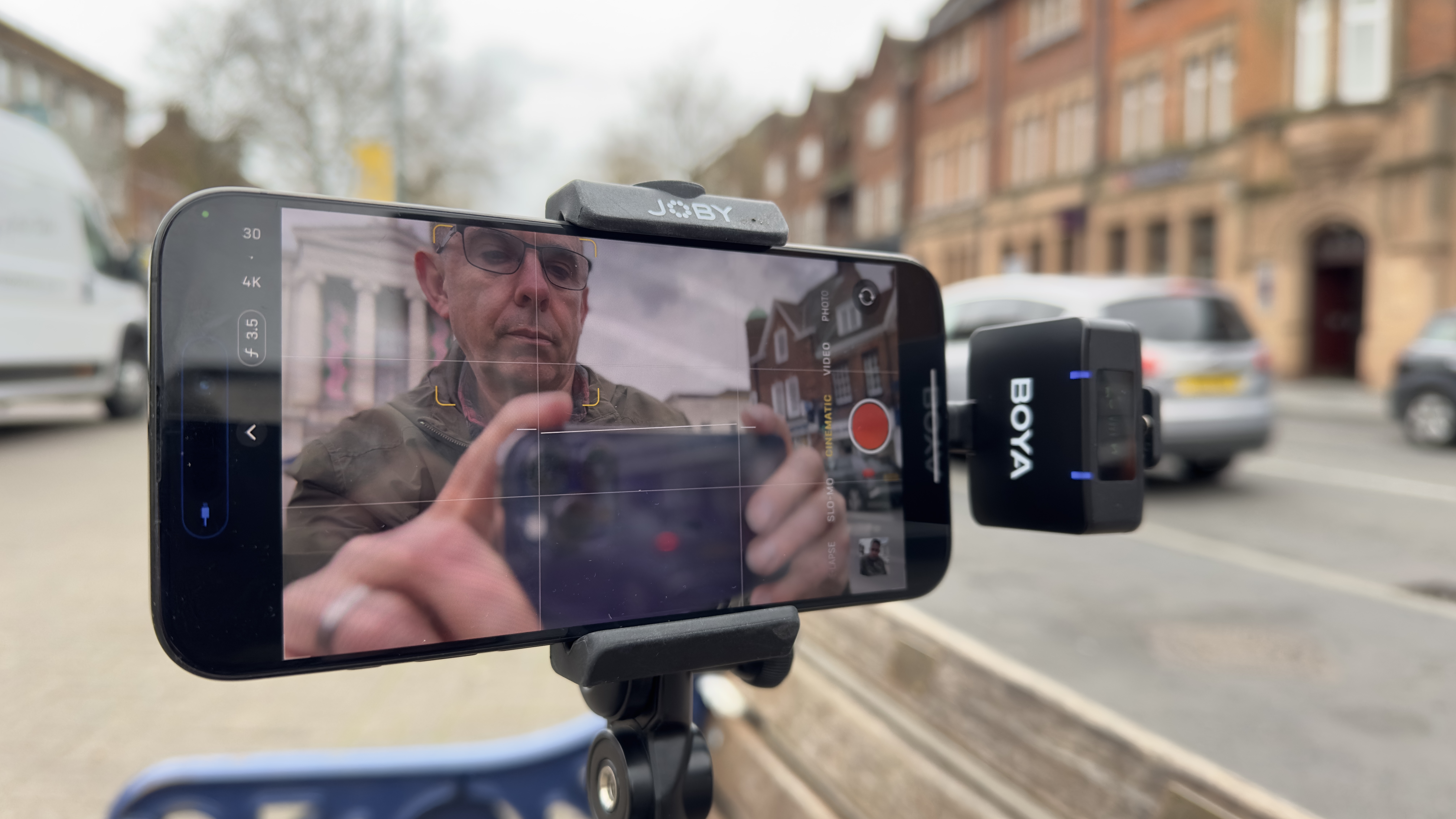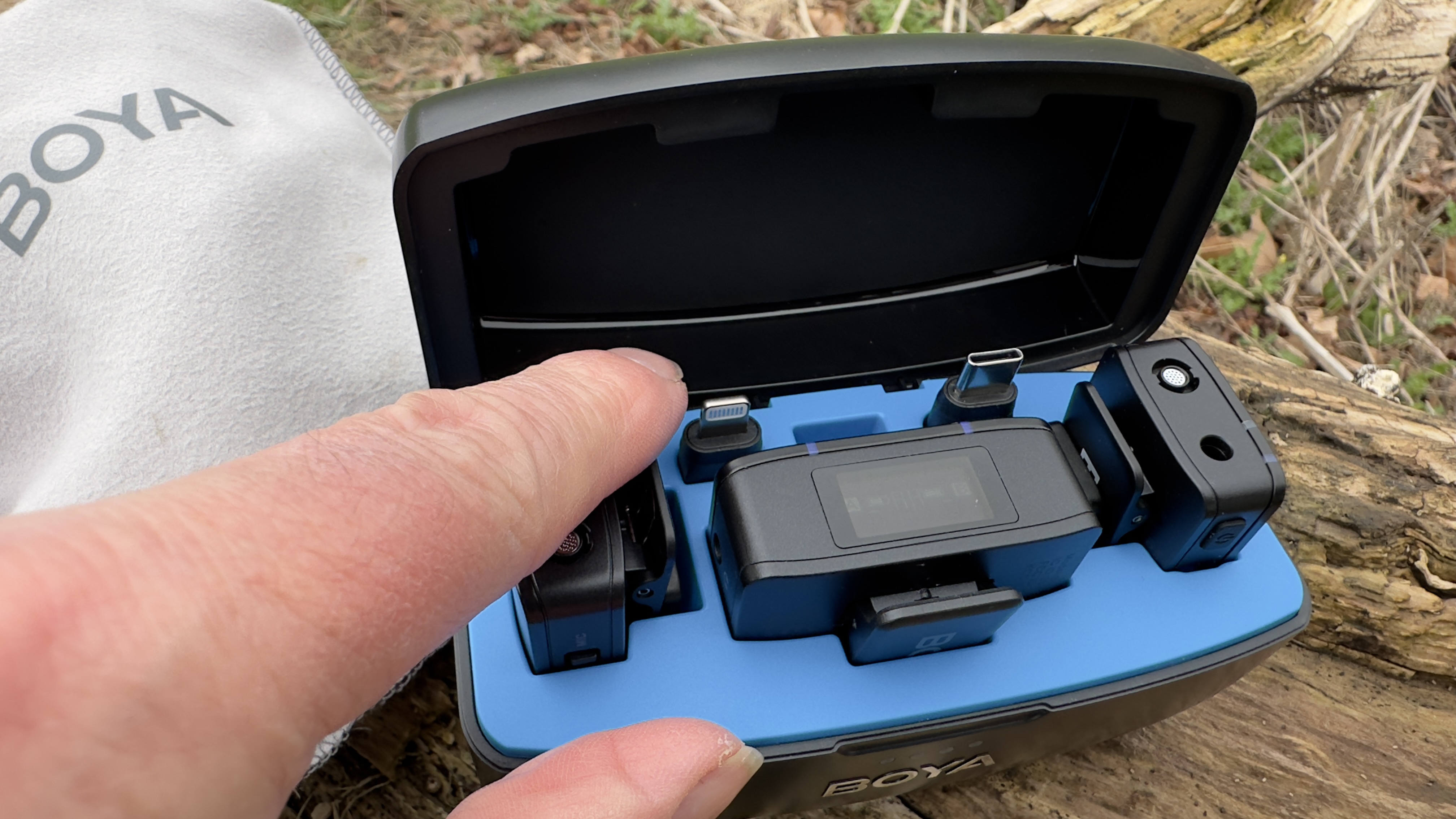
Since their launch in 2012, Boya has continued to produce a long line of microphones for content creators, from wired lavalier mics such as the Boya BY-M1, which is one of our top picks for the best microphone for vlogging and filmmaking to wireless mic kits like the Boya BY-XM6-S2.
Released in March 2024 the Boyamic is a 2.4GHz dual-channel wireless microphone kit that has more tricks up its sleeve than the similarly priced but more basic BY-XM6-S2 kit.
The Boyamic is designed to enable vloggers and filmmakers to broadcast their voices wirelessly from a transmitter that is clipped on the subject’s shirt to a receiver that plugs into a smartphone or camera. There are many wireless mic kits out there competing for your cash, so we’ve put the Boyamic through our usual tests to see how it performs over distance. We’ve also tested its ability to reduce the presence of ‘take-ruining’ rumble of wind noise and other annoying ambient sounds such as traffic.
If you’re in a rush jump straight to our video in the Performance section to see and hear the kit in action and then continue reading for a deeper dive into the Boyamic’s capabilities.

Boyamic: Specifications
Transmitter
- Dimensions: 47mm×29mm×13.5mm
- Net Weight: 24g
- Max SPL: 120dB
- Pick-up Pattern: Omnidirectional
- Transmission Type: 2.4GHz Digital Frequency
- Signal to Noise Ratio: >90 dB
- Battery Life: 6 hours with onboard recording enabled, 10 hours without
- Max Distance: 300m (with line of sight)
- Onboard recording: Yes
Receiver
- Reception Type: 2.4GHz Digital Frequency
- Dimensions: 46mm×34mm×19mm
- Net Weight: 29g
- Max Distance: 300m (with line of sight)
- Screen Type: OLED
- Battery Life: 11 hours
Boyamic: Design & Handling
The Boyamic kit consists of a charging case containing two transmitter mics and a receiver (plus accessories such as windshields and cabled lavalier mics - more on those later.) You can charge all the transmitters and receivers simultaneously by plugging a USB-C cable into the case.
As the case’s contents are equally charged you can be confident that when you’re conducting an interview the interviewee’s mic will broadcast for as long as yours. A major bonus is that the case has a built-in battery so when you pop the mics back into the box they will receive a top-up charge.
Battery life shouldn’t be much of an issue as both transmitters can broadcast for up to 10 hours, or 6 hours if you use the onboard recording feature, which records the subject’s audio as a WAV file directly onto the transmitter’s 8 GB storage space. This should enable you to record up to 15 hours of audio onto each transmitter.

The components of the Boyamic kit are made primarily of plastic. This is no bad thing as it means that the transmitters are lightweight (approx 24g) and won’t cause clothing to sag. You can also attach a transmitter to clothing that doesn’t have a lapel (such as a t-shirt) via a sturdy magnet.
The black plastic transmitters have a red button to activate onboard recording and a blue button to activate software noise reduction. A little red light on each transmitter indicates when onboard recording is happening and a green light notifies you that noise reduction is active. The transmitters are not very discrete so for a more subtle look you can clip a transmitter onto your belt, plug a supplied lavalier mic’s cable into the transmitter’s jack socket, and then clip the lavalier mic to your shirt.

One challenge I’ve faced in the past occurred when attaching a wireless kit’s receiver to my iPhone. Many kits I’ve reviewed come supplied with a 3.5 mm TRS to TRS cable which enabled me to connect their receiver to a DSLR. This meant that I needed to buy a third-party adaptor to attach the receiver to my iPhone 14’s Lightning port.
The Boyamic kit ships with a Lighting cable adaptor that slots into the receiver, so owners of iPhone 14 and older can plug the receiver straight into their device. Android users and owners of an iPhone 15 can attach the supplied USB-C adaptor to the Boyamic’s receiver. And if you want to shoot with a DSLR then you can slide the receiver into your camera’s shoe mount and attach it via the kit’s supplied 3.5mm TRS to TRS cable. This versatility makes the Boyamic a suitable audio recording solution for a wide range of filmmakers.
Boyamic: Performance
To test the Boyamic I took it to a local windswept park. When recording audio outdoors wind noise can be your number one enemy thanks to the base rumble that it adds to your recording. The Boyamic’s transmitters have a windproof capsule but this feature didn’t reduce wind noise on our test shoot. However, as soon as I clipped the supplied furry windshield onto the transmitter the wind rumble was kept at bay, allowing me to record a clean take out in the open. The windshield is easily attached by a rotating clasp which means it’s unlikely to fall off (and it did indeed stay put during my test shoot).
I plugged the supplied USB-C adaptor into the receiver and then plugged the receiver directly into my Phone 15 Pro Max. As there was no dangly cable involved I could mount the iPhone (with the receiver attached) onto a DJI Osmo Mobile 6 and used the DJI Mimo app to make the iPhone follow my every move as I tested the Boyamic (see my supporting video below).
I was then able to walk and talk freely and the iPhone recorded wind-free noise. The transmitter’s 48kHz sampling rate and 24-bit bit depth features produced a professional-sounding audio track with a nice range of tones, as you’ll hear from our test video.
There is a little latency (a delay between my voice and my lip movement) but I felt that this was negligible and I didn’t have to alter the soundtrack’s position relative to my video track in my editing software (Final Cut Pro). The receiver has a handy OLED display so I could be re-assured that a healthy sound level was being received from the transmitter. You can also monitor audio thanks to the receiver’s 3.5mm headphone output socket.

As with all wireless mic kits, I conducted a distance test. Boya claims the mic can transmit up to 300 meters but at that distance, you wouldn’t be able to see my lips move so I walked as far away as I could before stepping into the park’s lake. There was a little signal drop out when I walked away from the camera (and the mic lost line of sight with the receiver) but when I turned to face the camera the sound broadcast loud and clear.
For a belt and braces approach, I pressed the transmitter’s big red button to activate onboard recording so I was confident that I could plug any holes in my audio from the crystal clear and uninterrupted WAV file stored on the transmitter. In the test video, all the sound you hear is broadcast straight from the transmitter without any audio ‘patches’ from the onboard recording.
For the Boyamic’s noise reduction test, I headed to the noisy town center. Here noisy traffic competed with my voice so I tapped the blue button to activate software noise reduction (where the transmitter applies a low-cut filter). The rumble of the passing traffic did become reduced, but at the cost of my voice sounding thinner and slightly ‘fluttery’. On balance, I would probably not rely on the transmitter’s built-in noise reduction and use post-production tools in the edit instead.

{Product Name}: Verdict
All in all, I found the Boyamic to be a useful addition to my mobile filmmaking kit. I liked the fact that I could use its supplied adaptors to plug the receiver straight into either my iPhone 14 Pro Max or 15 Pro Max without the need for third-party adaptors. I could also attach the receiver to my DSLR if required. The large color-coded blue and red buttons on the transmitters made it quick and easy to activate onboard recording and noise reduction (though the Boyamic’s software noise reduction was not as effective as some of the other wireless mics I’ve tested - see Alternatives section).

✅ Buy this if...
- You need onboard recording
- You need to monitor audio via the receiver
- You need to plug the receiver into your smartphone without cables
🚫 Don't buy this if...
- You need a mic with effective built-in noise-reduction software
- You need to record without ‘line of sight’







